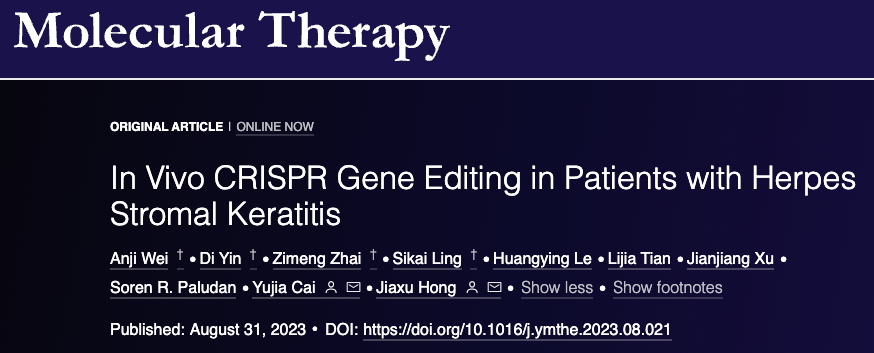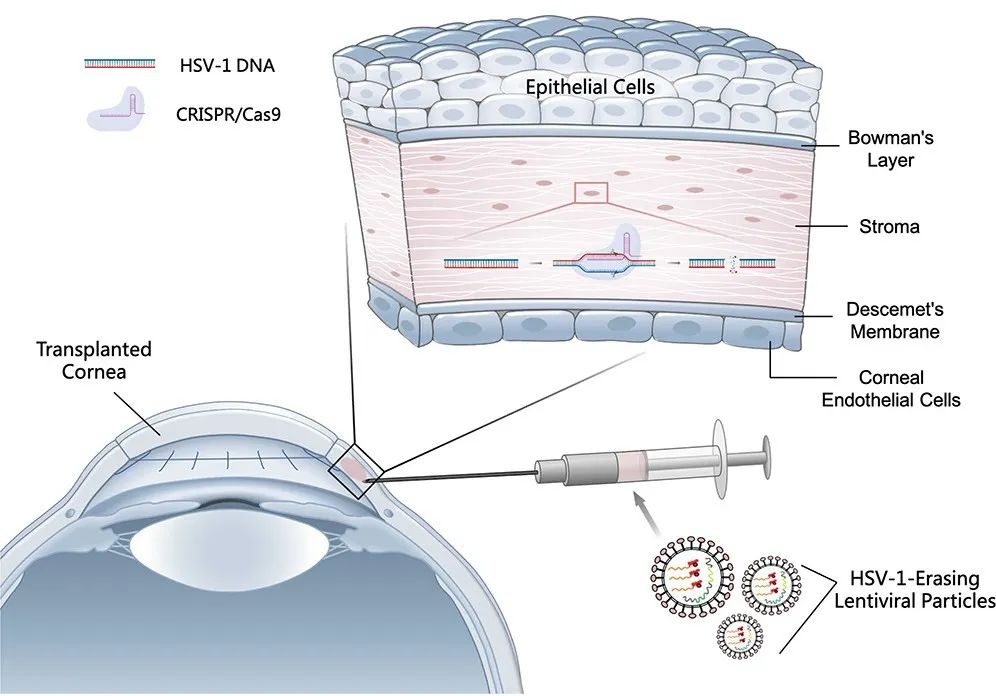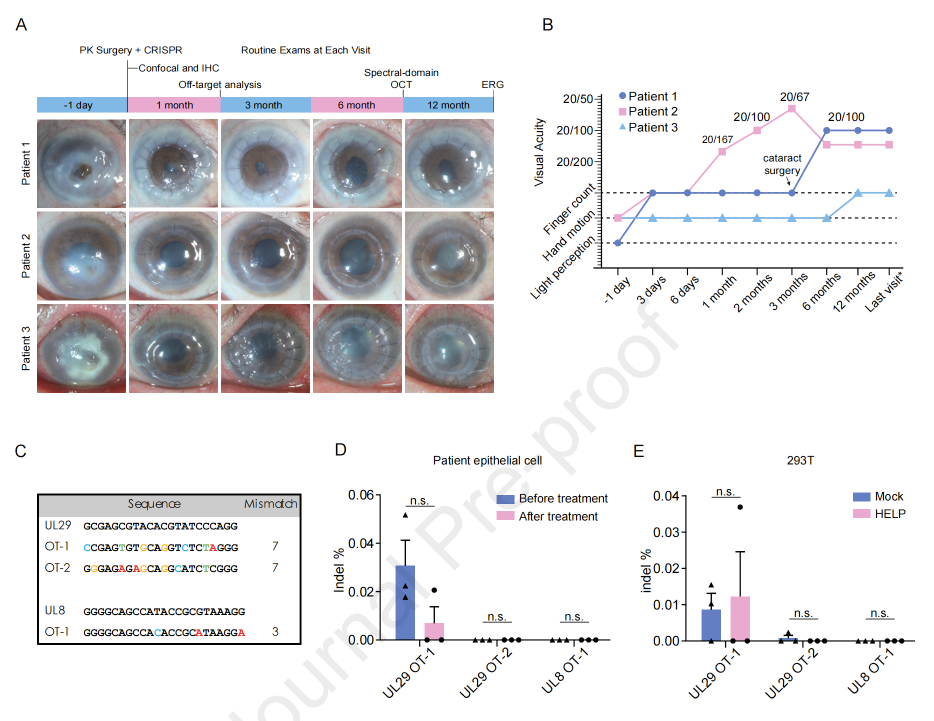
Source: biological world
Herpes simplex keratitis (HSK) caused by herpes simplex virus type 1 (HSV-1) infection is the main cause of unilateral corneal blindness worldwide.It is estimated that 1.5 million cases of HSK occur each year, of which 40, 000 develop severe visual impairment. Trigeminal ganglion (TG) is the place where HSV-1 establishes a lifelong latency in the host after primary acute corneal infection. The latent HSV-1 in TG neurons will be reactivated and lead to repeated infection.
In May 2021, Chief physician Hong Jiaxu of Otorhinolaryngology Hospital affiliated to Fudan University and researcher Cai Yujia of system Biomedical Research Institute of Shanghai Jiaotong University developed an instantaneous targeted gene editing technique called HELP to achieve a complete cure of viral keratitis in mice . HELP technology uses viroid vector (VLP) to deliver CRISPR-Cas9 gene editing tool in the form of mRNA, which makes the residence time of Cas9 enzyme in the body very short, which can reduce the risk of miss target and immune reaction to a greater extent. And advanced the technology to the clinical trial stage.
On August 31, 2023, Chief physician Hong Jiaxu and researcher Cai Yujia, as co-correspondent authors, published a research paper entitled In Vivo CRISPR Gene Editing in Patients with Herpes Stromal Keratitis in the journal Molecular Therapy.
In this study, 3 patients with severe refractory herpes simplex keratitis (HSK) with acute corneal perforation were treated with HELP combined with keratoplasty and were followed up for an average of 18 months. The results showed that there was no recurrence of HSV-1, no CRISPR-induced miss effect and no systemic adverse events in 3 patients.
These preliminary clinical results show that HELP is expected to become a new in vivo antiviral therapy, which will help the real arrival of the era of in vivo gene editing therapy, and bring new hope for patients with hereditary, acquired and infectious diseases that are untreatable and difficult to treat.


In previous studies, the Cai Yuga and Hong Jiaxu research team used HELP technology to conduct a preclinical study on the treatment of viral keratitis and achieved retrograde transport from the cornea to the trigeminal ganglion in acute and recurrent infection mice, clearing the HSV-1 virus bank hidden in the ganglia.
In vivo CRISPR gene editing therapy has great clinical potential, but its safety and efficacy are still unknown to a large extent. In this study, the team injected HELP into the cornea of 3 patients with severe refractory herpes simplex keratitis (HSK) with acute corneal perforation during keratoplasty.
This is an investigative, open-label, single-group, non-randomized intervention trial (NCT04560790) conducted in a single center. Three patients stopped antiviral therapy after HELP treatment and were followed up for an average of 18 months. At the last follow-up, no recurrence of HSV-1 virus was found in their corneal grafts and tear swabs.
In addition, the team used genome-wide unbiased double-strand break point sequencing (GUIDE-seq) to detect the miss of the CRISPR-Cas9 system at the whole gene level, and no off-target DNA breaks induced by CRISPR-Cas9 were found. Further detection showed no vector specific immune response induced by injection of HELP, and no other systemic adverse events were found.
 Main clinical outcomes of treated HSK patients
Main clinical outcomes of treated HSK patients
These preliminary clinical results suggest that HELP may be an effective strategy to limit HSV-1 replication in human cornea without obvious CRISPR-related side effects and has acceptable safety. The treatment is also expected to expand to patients with mild herpes simplex keratitis (HSK) in the future to prevent them from developing refractory HSK and complications of corneal perforation. Overall, this study provides a clinical proof of concept for in vivo CRISPR gene editing as a potential antiviral strategy.
Wei Anji and Zhai Zimeng of Otorhinolaryngology Hospital affiliated to Fudan University, Yin Di of system Biomedical Research Institute of Shanghai Jiaotong University, and Ling Sikai, lead gene, are co-authors of the paper. Hong Jiaxu, chief physician of Otorhinolaryngology Hospital affiliated to Fudan University and Cai Yujia, researcher of system Biomedical Research Institute of Shanghai Jiaotong University, are the correspondent authors of the paper. The project is supported by the key R & D program of the Ministry of Science and Technology, the National Natural Science Foundation of China, the Shanghai Medical Innovation Research Project, and the 14th five-year Plan discipline Development Project of Otorhinolaryngology Hospital affiliated to Fudan University.
Paper link: https://doi.org/10.1016/j.ymthe.2023.08.021